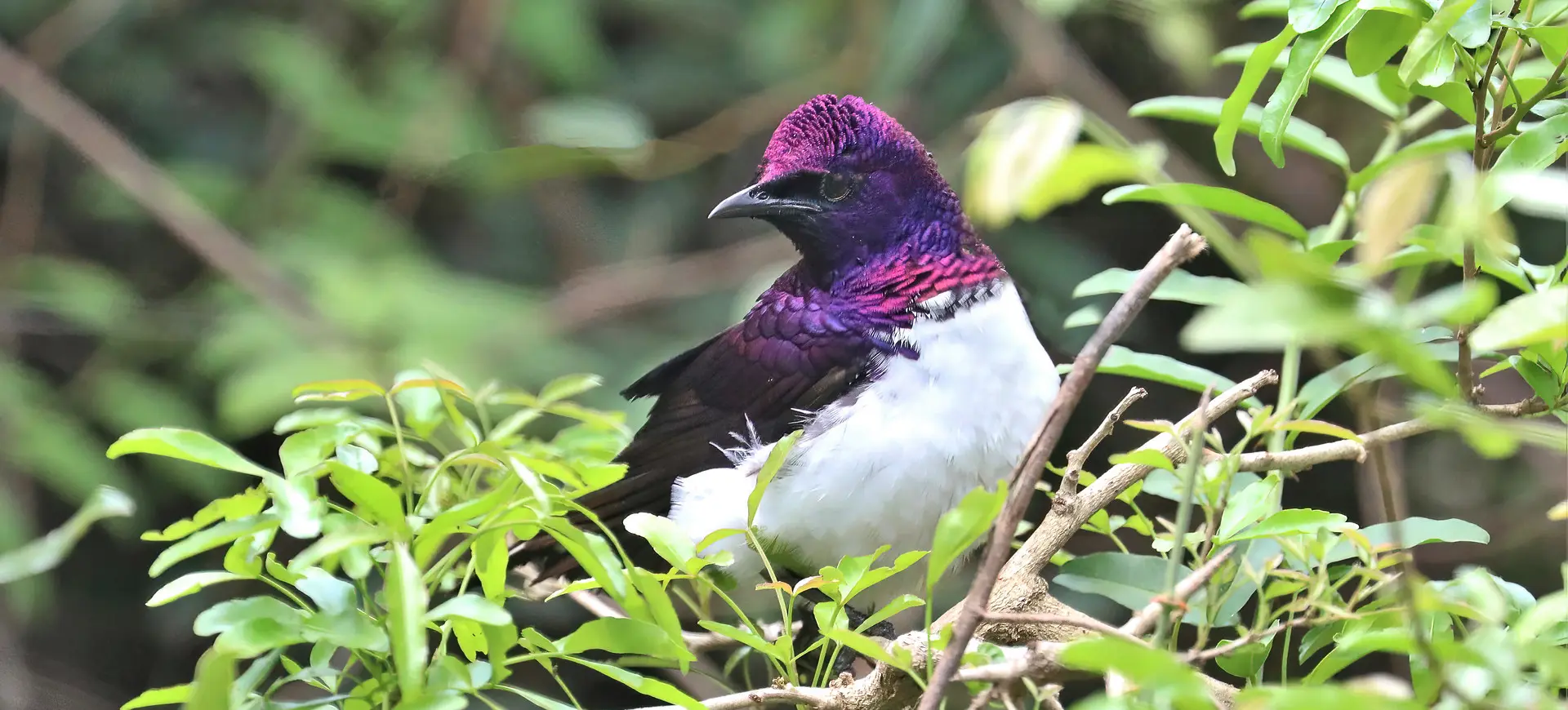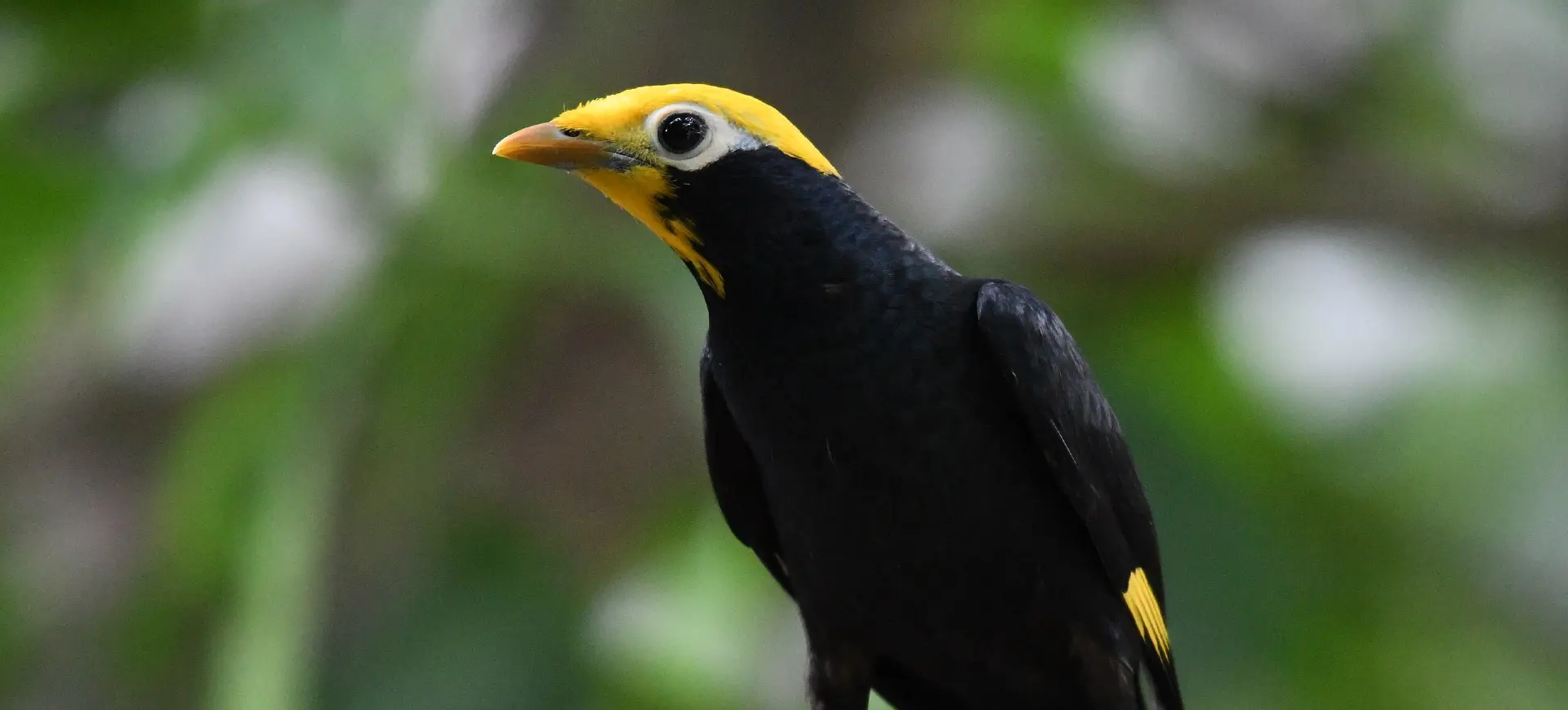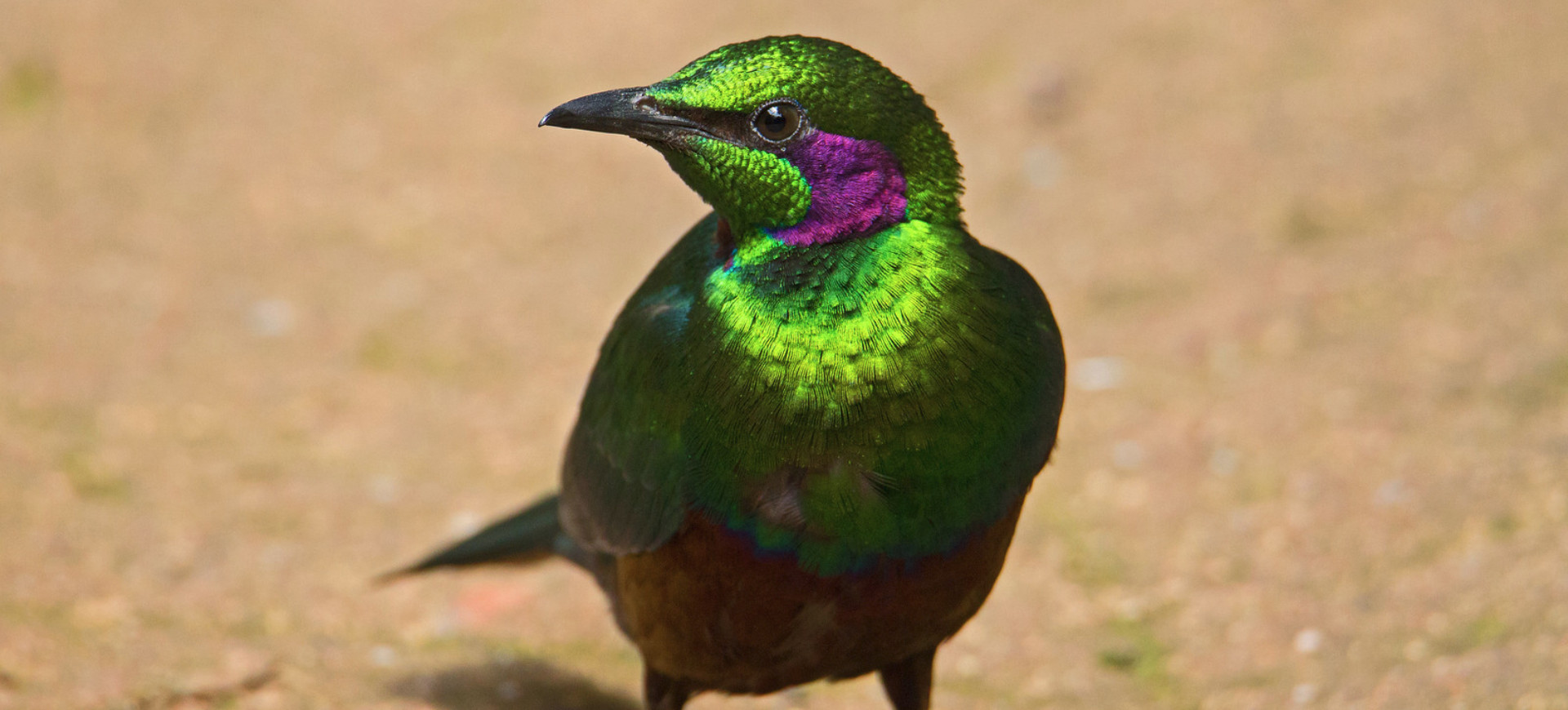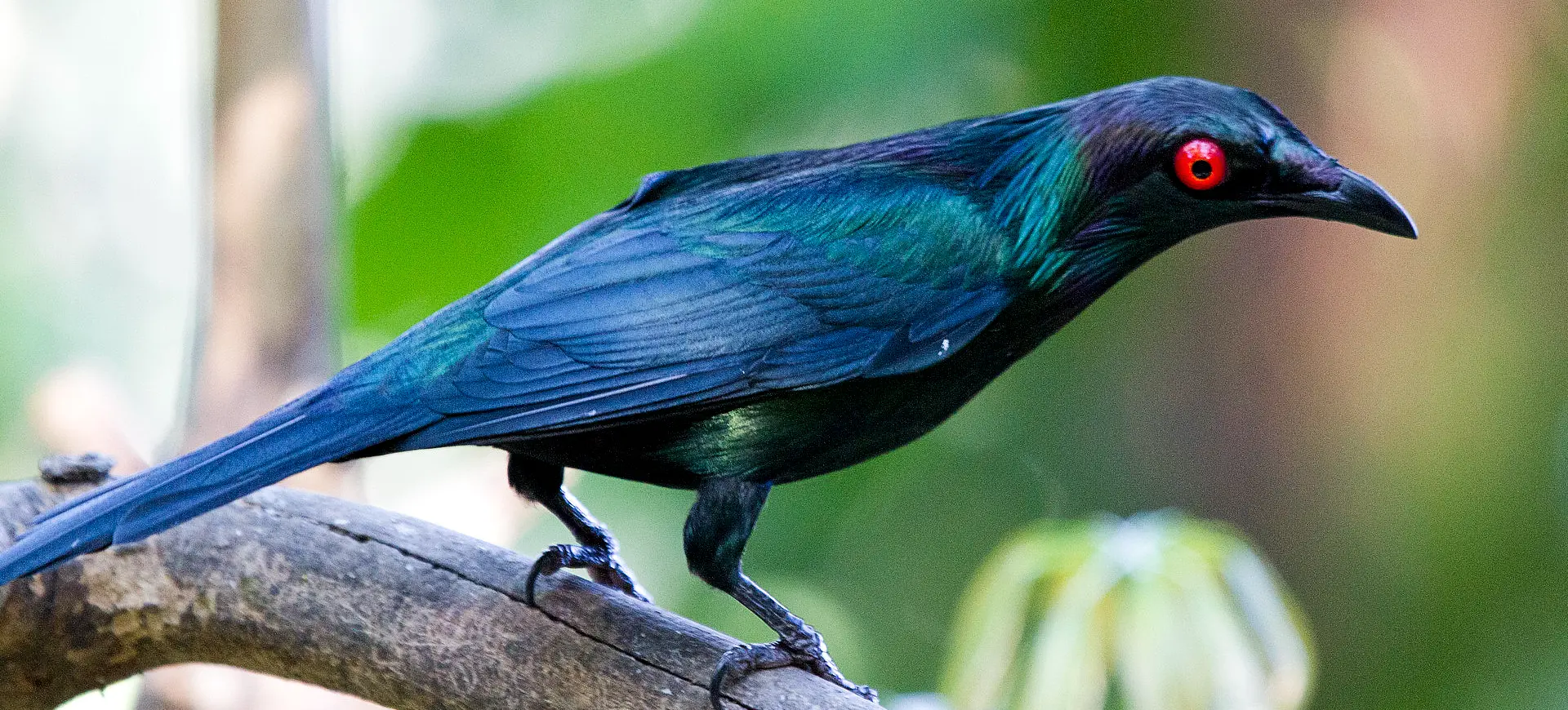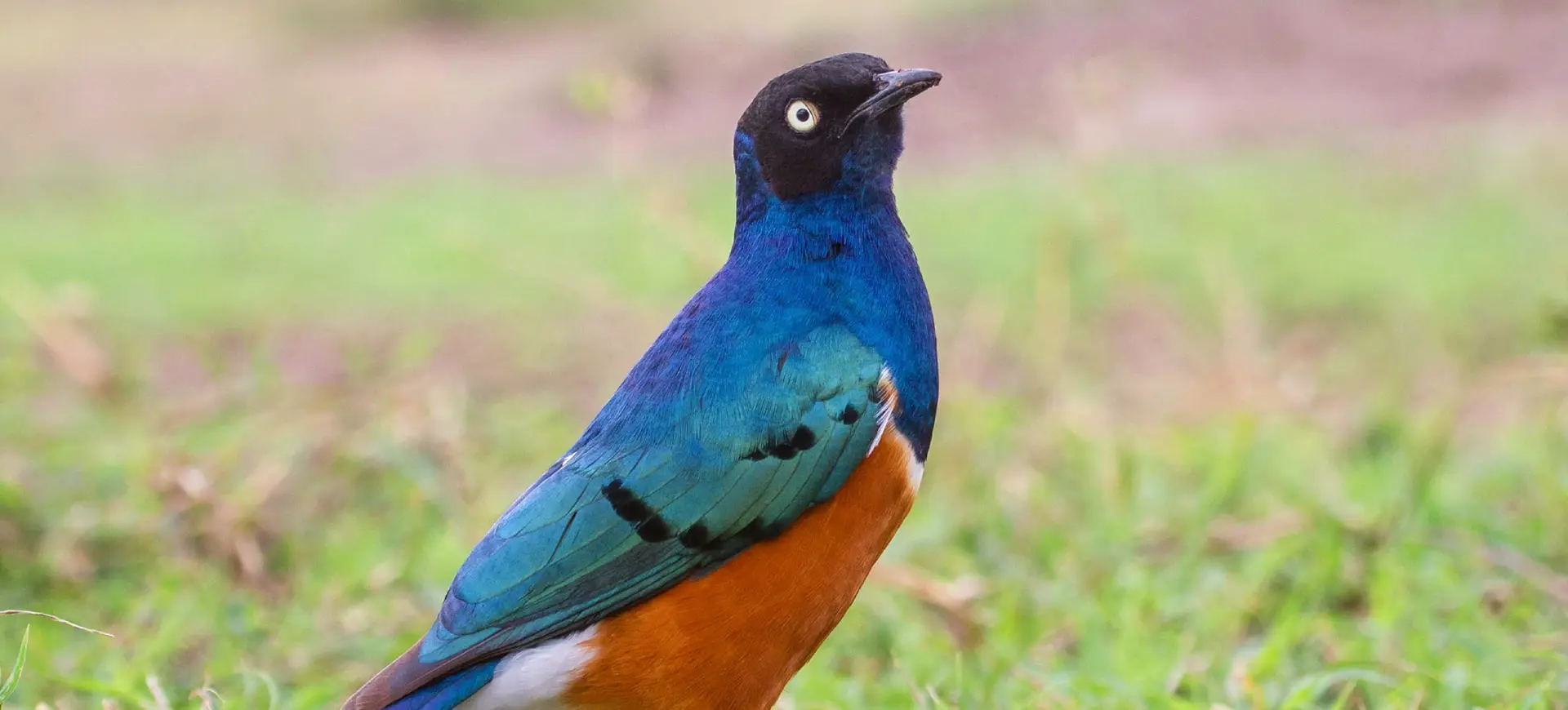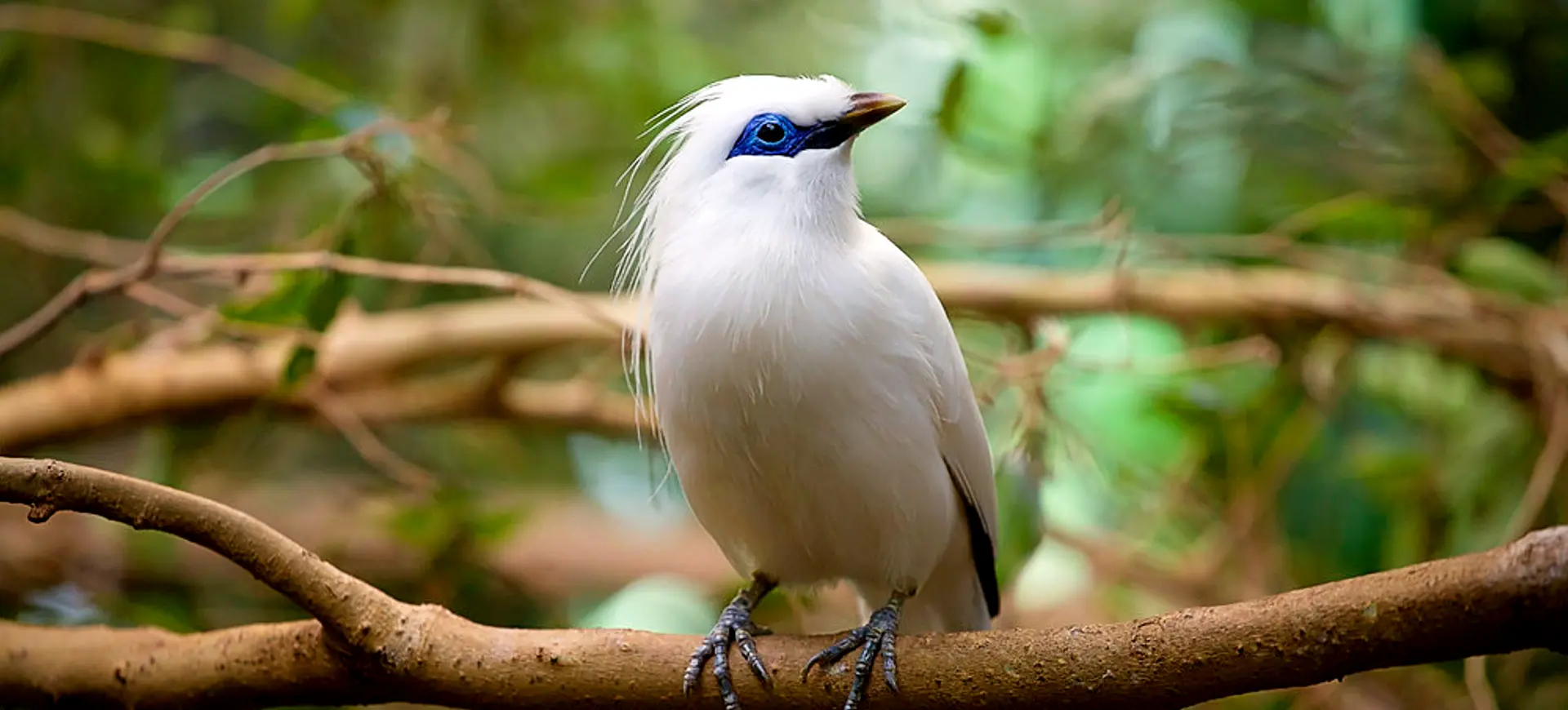Overview
The Golden-breasted Starling, scientifically known as Lamprotornis regius, is a visually stunning bird native to East Africa. Its vibrant plumage features a metallic blue back, wings, and tail, contrasting sharply with its bright golden breast and belly. The species is easily identifiable by its green head, marked with black around the eyes, and its long, tapered tail. These birds are relatively small, with adults averaging between 7.5 to 8.5 inches in length.
Renowned for their social nature, Golden-breasted Starlings are typically found in small flocks. They communicate using a variety of sounds, including whistles and clicks. These birds are cavity nesters in their natural habitat, preferring to build their nests in tree holes. They often use abandoned nests of other tree-dwelling species, adapting them to their needs.
Golden-breasted Starlings play an important role in their ecosystem. Their diet consists mainly of insects and fruits, contributing to seed dispersal and insect population control. These birds are known for their adaptability, thriving in wild and altered landscapes. In addition to their ecological role, they are a popular species among bird enthusiasts due to their striking appearance and engaging behavior.
Taxonomy
Kingdom
Phylum
Class
Order
Family
Genus
Species
Sub Species
Type
Physical Description:
The Golden-breasted Starling is renowned for its iridescent plumage, which shimmers in sunlight, displaying a spectrum of colors. Adults measure about 7.5 to 8.5 inches in length, with a slender, pointed black bill and pale grey legs and feet. The bird’s eyes are particularly striking, featuring a white outer ring contrasting with the dark pupil. This distinctive eye pattern adds to the bird’s exotic appearance.
Their wingspan ranges from 11 to 14 inches, allowing for agile flight. The males and females are similar in appearance, making it difficult to distinguish between the sexes based solely on plumage. The vibrant colors of the Golden-breasted Starling are more than just attractive; they play a role in social signaling and mate selection. These colors can appear more vibrant during the mating season, enhancing the bird’s attractiveness to potential mates.

Lifespan: Wild: ~12 years || Captivity: ~15 years

Weight: Male: 2.8-3.5 oz (80-100 g) || Female: 2.7-3.4 oz (77-96 g)

Length: Male: 7.5-8.5 in (19-21.5 cm) || Female: 7.5-8.5 in (19-21.5 cm)

Wingspan: Male & Female: 11-14 in (28-35 cm)

Top Speed: 30 mph (48 km/h)
Characteristic:
Native Habitat:
Golden-breasted Starlings inhabit the dry savannas and grasslands of Eastern Africa, particularly in countries like Ethiopia, Somalia, Tanzania, and Kenya. They prefer open landscapes with scattered trees and shrubs, which provide food and nesting sites. These birds have shown a remarkable ability to adapt to modified landscapes, including cultivated areas and gardens, as long as their basic habitat needs are met.
Their native habitat is characterized by a tropical and subtropical climate, with variations in rainfall and vegetation. The availability of tree cavities for nesting is a crucial aspect of their habitat. Despite their adaptability, land use and habitat destruction changes can impact their populations. Conservation efforts focus on preserving their natural habitats and ensuring sustainable land use.
Climate Zones:
Biomes:
Biogeographical Realms:
Continents:
Diet:
Diet & Feeding Habits:
Golden-breasted Starlings are omnivorous, primarily feeding on insects and other invertebrates, which they forage from the ground or foliage. Their diet also includes fruits, seeds, and nectar, making it quite varied. These birds play a crucial role in seed dispersal and insect population control in the wild. Their feeding habits are adaptable, allowing them to thrive in various environments.
In captivity, the diet of Golden-breasted Starlings is supplemented with fruits, vegetables, and commercially prepared bird foods. This ensures they receive balanced nutrition, replicating their diverse natural diet as closely as possible. They are particularly fond of mealworms and other small insects, which provide essential proteins. Fruit and nectar intake is important for maintaining their vibrant plumage and overall health.
Mating Behavior:
Mating Description:
Golden-breasted Starlings are monogamous, often forming long-term pair bonds. Males perform elaborate courtship displays, including singing, wing-flapping, and showcasing their bright plumage. These displays are crucial in attracting a mate and establishing pair bonds. The breeding season is marked by increased social interaction and vocalization.
Nesting occurs in tree cavities, where the female lays 2 to 4 eggs. Both parents participate in incubation and care for the chicks. Cooperative breeding behavior is observed, where offspring from previous broods assist in raising new chicks. This cooperative system enhances the survival rate of the offspring and reduces the parental burden.
Reproduction Season:
Birth Type:
Pregnancy Duration:
Female Name:
Male Name:
Baby Name:
Social Structure Description:
Golden-breasted Starlings exhibit a complex social structure, living in groups that range from small family units to larger flocks. These groups provide safety and efficiency in foraging and predator avoidance. Cooperative breeding is a notable aspect of their social structure, where non-breeding individuals assist in raising the offspring of breeding pairs.
Communication is essential to their social interactions, with various calls and songs used for different purposes. The social bonds within groups are strong, and group living has been observed to enhance breeding success and survival. Their social behavior is key to their adaptability and success as a species.
Groups:
Conservation Status:
Population Trend:
The Golden-breasted Starling population is currently considered stable, with no immediate threats of decline. They are common in many parts of their range, particularly in protected areas such as national parks and reserves. Their adaptability to altered landscapes has contributed to their stable population status.
While the species is not currently endangered, it faces potential habitat destruction and degradation threats. As human populations expand, the loss of natural habitats and the use of pesticides in agriculture can impact these birds. Climate change may also affect their habitat and food sources in the future. Continuous monitoring and conservation efforts are essential to ensure the species’ long-term survival.
Population Threats:
Habitat loss and fragmentation due to human activities are the primary threats to Golden-breasted Starlings. Urbanization, agricultural expansion, and deforestation lead to the loss of natural habitats and nesting sites. Pesticides used in agriculture can decrease their insect prey, indirectly affecting their food sources.
The pet trade, while less of a threat, can impact wild populations if not regulated. Illegal trapping and sale of these birds for the pet market can reduce their numbers in the wild. Awareness and regulation are key to preventing such practices. Climate change and its impact on their habitat and food availability pose additional future threats.
Conservation Efforts:
Conservation efforts for the Golden-breasted Starling include habitat protection and sustainable land use practices. Education and awareness programs aim to reduce habitat destruction and promote bird-friendly agricultural practices. Monitoring and regulating the pet trade are important to prevent illegal capture and sale.
In captivity, breeding programs help maintain healthy populations and serve as a potential resource for reintroduction if wild populations decline. Research and monitoring of wild populations contribute to understanding their ecological needs and threats. Given the bird’s range across several countries, international cooperation is crucial for effective conservation.
Additional Resources:
Fun Facts
- Golden-breasted Starlings can mimic a wide range of sounds, including human-made noises and calls of other bird species.
- Their iridescent plumage is due to the structure of their feathers, which refracts light to produce vibrant colors.
- These birds are not strong flyers over long distances, preferring to fly short distances between trees and foraging areas.
- They have a unique way of bathing by spreading their wings and tail and fluttering in the dust, known as “dust bathing.”
- Golden-breasted Starlings are known to engage in anting, a behavior where they use ants to rid their feathers of parasites.
- In addition to their visual beauty, they play a crucial role in their ecosystems as seed dispersers and pest controllers.
- They have a relatively long lifespan for birds of their size, living up to 12 years in the wild and even longer in captivity.
- These birds are monogamous, and pairs often remain together for several breeding seasons.
- The Golden-breasted Starling’s diet changes according to the season, with more fruit consumption during certain times of the year.
- They are a popular species in aviculture due to their striking appearance and interesting behaviors.






